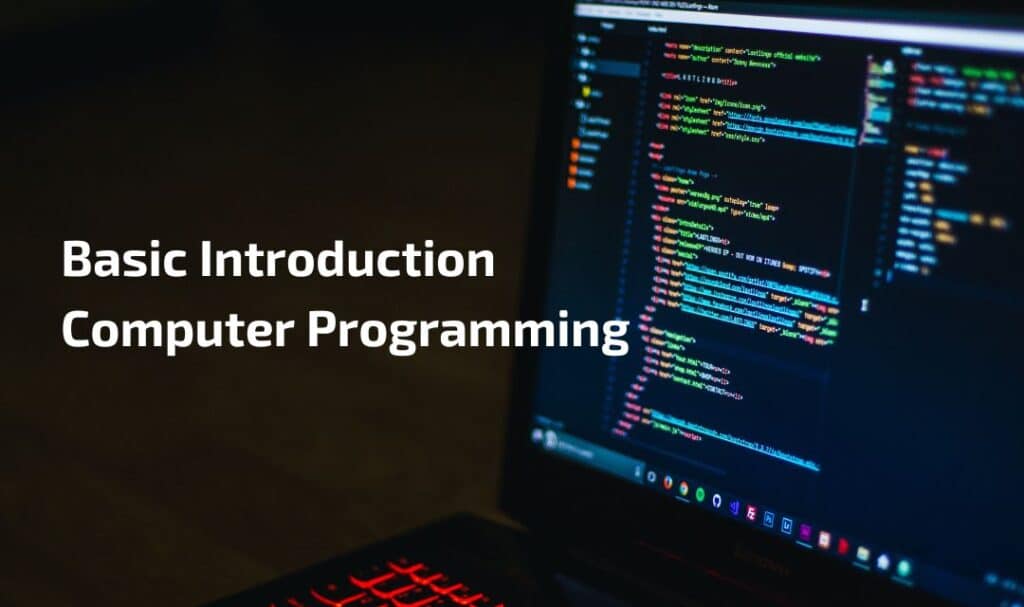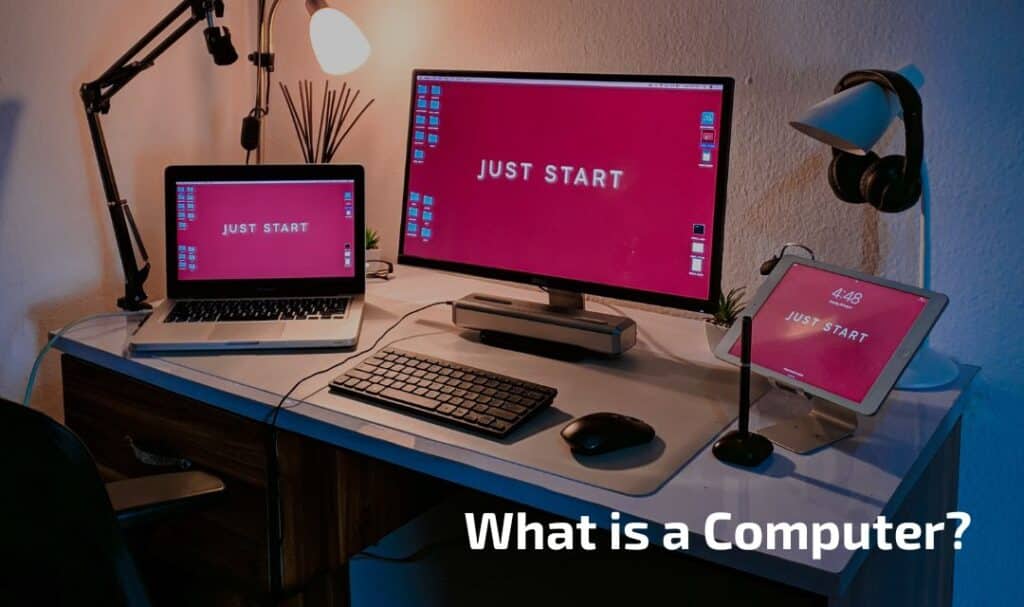What is Computer Programming?
Computer programming is the process of writing instructions that a computer can understand and execute to perform specific tasks. These instructions are written in various programming languages, which act as a bridge between human logic and machine operations.
A program is essentially a set of instructions that tells a computer what to do, such as calculating numbers, automating tasks, controlling robots, or displaying web pages.
In this guide, we will cover:
- The history of programming
- How programming works
- Types of programming languages
- Core programming concepts
- Applications of programming
- The future of coding
1. History of Computer Programming
Early Days (Before Modern Computers)
Programming began even before the invention of digital computers: [ See more details in Wikipedia ]
- 1800s: Charles Babbage designed the first mechanical computer, and Ada Lovelace wrote the first algorithm for it.
- 1936: Alan Turing developed the concept of a universal computing machine.
First Generation (1940s-1950s) – Machine Language
- The first programs were written in machine language (binary code: 1s and 0s).
- Example: The ENIAC computer used machine code instructions.
Second Generation (1950s-1960s) – Assembly Language
- Assembly language replaced binary code with short text commands like
MOV,ADD,SUB. - Example: IBM computers used Assembly language for scientific calculations.
Third Generation (1960s-1980s) – High-Level Languages
- High-level languages (HLLs) made programming easier by using English-like commands.
- Examples: FORTRAN, COBOL, C, BASIC.
Fourth Generation (1980s-2000s) – Object-Oriented Programming (OOP)
- Introduced modular programming, where software is built using objects.
- Examples: Java, Python, C++.
Fifth Generation (2000s-Present) – AI & Automation
- Programming is evolving towards AI-based and low-code/no-code platforms.
- Examples: Python for AI, JavaScript for web apps, and SQL for databases.
2. How Computer Programming Works
The Programming Process
- Problem Definition – Understanding what needs to be solved.
- Algorithm Design – Creating a step-by-step solution.
- Writing Code – Translating the algorithm into a programming language.
- Compiling & Debugging – Converting code into machine language and fixing errors.
- Executing & Testing – Running the program and ensuring it works correctly.
- Deployment & Maintenance – Making the program available for users and updating it as needed.
3. Types of Programming Languages
Programming languages are categorized into low-level and high-level languages:
A. Low-Level Languages (Closer to Machine Code)
- Machine Language (Binary Code) – Directly understood by the computer.
- Assembly Language – Uses symbolic instructions like
MOV, ADD, SUB.
B. High-Level Languages (Easier for Humans to Read and Write)
These languages are designed to be easier to understand and use.
1. Procedural Languages (Follow step-by-step instructions)
- Examples: C, Pascal, FORTRAN
- Usage: System programming, mathematics, embedded systems.
2. Object-Oriented Programming (OOP) Languages (Uses objects & classes)
- Examples: Java, C++, Python
- Usage: Software development, gaming, mobile apps.
3. Scripting Languages (Interpreted, used for automation)
- Examples: Python, JavaScript, PHP
- Usage: Web development, automation, AI.
4. Functional Programming Languages (Focuses on mathematical functions)
- Examples: Lisp, Haskell
- Usage: AI, mathematical computing.
5. Database Languages (For managing databases)
- Examples: SQL, PL/SQL
- Usage: Data storage, retrieval, analysis.
6. Markup Languages (Define structure & presentation of content)
- Examples: HTML, XML, CSS
- Usage: Web design, document formatting.
4. Core Programming Concepts
Regardless of the language, programming involves several fundamental concepts:
1. Variables & Data Types
- Variables store data values.
- Data types include: integers, floats, strings, booleans, and arrays.
- Example (Python):
age = 25 # Integer name = "Alice" # String price = 99.99 # Float is_active = True # Boolean
2. Control Structures (Decision-making & loops)
- Conditional Statements: (
if-else) – Decide which code to execute.if age >= 18: print("You are an adult.") else: print("You are a minor.") - Loops: (
for, while) – Repeat actions multiple times.for i in range(5): print("Hello World!")
3. Functions & Modules (Reusable blocks of code)
- Functions reduce code duplication and improve readability.
def greet(name): return "Hello, " + name + "!" print(greet("Alice"))
4. Object-Oriented Programming (OOP)
- Uses classes and objects to model real-world entities.
class Car: def __init__(self, brand, model): self.brand = brand self.model = model def show_details(self): return f"Car: {self.brand} {self.model}" my_car = Car("Tesla", "Model S") print(my_car.show_details())
5. Error Handling (Debugging)
- Helps find and fix errors in code.
try: x = 10 / 0 # Division by zero error except ZeroDivisionError: print("Cannot divide by zero!")
5. Applications of Programming
Programming is used everywhere in modern life:
1. Web Development
- Languages: HTML, CSS, JavaScript, PHP, Python
- Example: Creating websites like Google, and Facebook.
2. Mobile App Development
- Languages: Java (Android), Swift (iOS), Kotlin, React Native
- Example: Developing apps like WhatsApp, and Instagram.
3. Artificial Intelligence & Machine Learning
- Languages: Python, R, TensorFlow
- Examples: Self-driving cars, chatbots, and facial recognition.
4. Game Development
- Languages: C++, Unity, Unreal Engine
- Example: Games like Fortnite, and Call of Duty.
5. Cybersecurity & Ethical Hacking
- Languages: Python, C, Bash
- Example: Securing networks, ethical hacking.
6. The Future of Programming
- Artificial Intelligence in Coding – AI-based tools will assist programmers.
- Quantum Computing – Will revolutionize complex problem-solving.
- Low-Code/No-Code Development – Making programming accessible to non-developers.
- Blockchain & Web3 – Secure, decentralized applications.
Conclusion
Programming is one of the most valuable skills today. Whether you’re interested in web development, AI, mobile apps, or game development, learning to code opens endless possibilities.
Would you like recommendations on where to start coding? 😊




Pingback: What is a Computer? | Expert Royal